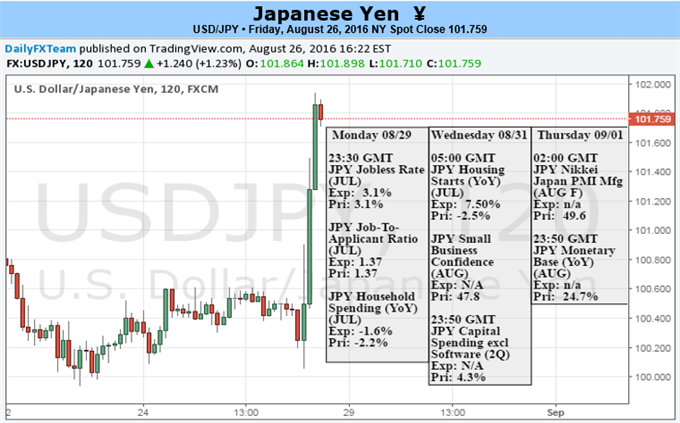
Fundamental Forecast for the Australian Dollar: Bearish
What do retail traders’ USD/JPY trade decisions say about the price trend? Find out here.
The Japanese Yen fell versus the US Dollar for the first week in five on the heels of a US Federal Reserve-led Dollar surge. A relatively busy week of US economic event risk ahead makes further USD-driven volatility likely, and it will be important to watch whether the USD/JPY continues to hold above the psychologically-significant ¥100 mark.
Weaker-than-expected Japanese inflation data should have sent the Yen lower versus the US Dollar (USD/JPY higher) as National Consumer Price Index figures showed the country saw deflation for the fourth-consecutive month. The persistent risk of deflation would normally force the Bank of Japan to cut interest rates further into negative territory and engage in other forms of monetary policy easing—all of which would likely hurt the JPY exchange rate against major counterparts. And yet traders showed little concern as the JPY remained relatively motionless despite the key CPI data disappointment.
The lack of market reaction likely reflects the fact the Bank of Japan has fairly limited scope to ease monetary policy even further. Its “Loan Policy Rate” is already negative, and pushback from Japanese banks will like make the BoJ reticent to push rates further into negative territory. It is also quite clearly running out of room for Quantitative Easing purchases as its total balance sheet currently stands at a whopping 85 percent of national GDP. It is quite literally running out of things to buy as it already owns 40 percent of outstanding Japanese Government Bonds.


















Leave A Comment